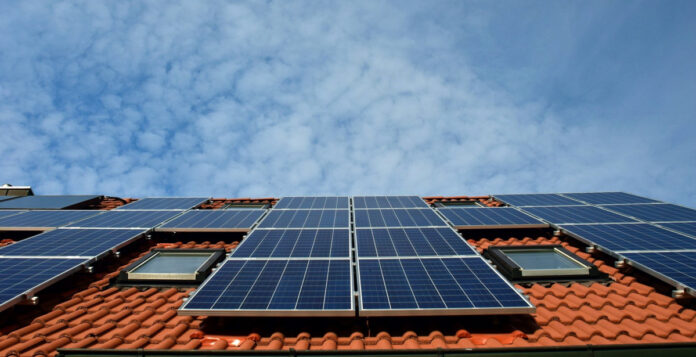My wife is growing tired of the frequent power outages—we seem to have them at least once a month. I can’t blame her; they can be disruptive. We generally stop what we are doing, put on head lamps, grab a lantern and read or nap until the power goes back on. Often the power is out for about four hours. Sometimes it is out for four days. We’ve heard stories of week-long outages.
Why our Power Goes Out
One reason our power goes out is because we are at the end of a six-mile line of electric poles. There is one road in and out, and one line of electrical poles that follows it the whole way. There are no extra lines coming in, no second route for the electricity to take. So if a tree falls on a line, if a car runs into a pole, or if we experience the all too common “equipment failure” anywhere along this six-mile stretch, our power goes out.
Another reason is that we live in the mountains where it is windy and we have bad weather. (We understand when the power goes out during a period of high winds and prepare for it; we don’t understand when it goes out on a warm day without wind or rain.) Besides the wind, we get some ice storms, and they can cause limbs to fall, trees to break in half, and lines to snap. Our utility should do more tree trimming, but given the length of the road and the volume of trees, someone in a warm, well-lit office probably decided it wasn’t cost effective.
The power company shut off power to prevent the system from crashing due to too strong a demand at least once that we know of. My fear is this is an early symptom and we will see more frequent outages as the push for green energy and electric vehicles stresses the grid.
How we Cope
Right now, when a power outage exceeds four hours, I roll the generator out of the garage and tug on its starter cord to power it up. Then we run two extension cords from it to mission-critical items like the refrigerator and freezer. We use two other cords for lighting and other non-essential devices, like the microwave or, in the middle of summer, the dehumidifier. Most days, we can get by with running the genny three hours in the morning and three or four hours after dark.
The downside of this generator is that it is not powerful enough to power our 240 volt devices, like the stovetop, oven, hot water heater, air conditioner, etc. It also has a limited run time and requires gasoline. While I have spare cans on hand, in an end-of-the-world scenario, we would run out within a couple of weeks.
Future Solutions
Here are several options we have considered to provide power during an outage:
Buying a Solar Generator
These devices are quiet, don’t burn fuel, and will do a good job of powering our mission-critical devise over those four to twelve-hour outages. While convenient and capable of powering the same devices as our generator, they have a limited battery life. For example, my generator can output more in an hour than these devices hold in their primary battery. Sure, you can buy multiple machines or additional batteries, but each one costs thousands.
The term “solar generator” is also a misnomer since most people use them as a giant rechargeable battery rather than hooking up solar. Plus, the 200 to 400 watt folding solar panels you can buy for these devices will not recharge a 3,000 watt battery in a single day. And they won’t generate power in the rain or snow, which might be when we need it most. On a per-kilowatt basis, they are expensive.
While great for your camper or tiny home, these are not idea for us. I rate these as useful, and better than nothing, but not the solution we need.
Installing a Transfer Switch
Instead of running extensions cords in windows and down hallways, I could have a transfer switch installed which would allow our existing generator (or a future generator that offers more power) to send power to select circuits in our house. For example, Home Depot lists a 10-circuit manual transfer switch for less than $500.
This is the least expensive solution, and it lets me use my existing generator. If we find we need more power, I can upgrade to a larger generator and save the current one for use as a backup. The downsides of the generator remain, however, including the noise and gasoline consumption.
I rate this as a good solution for intermittent power outages and improvement from our current process, but not ideal for TEOTWAWKI.
Buying a whole-house generator
Generators by companies like Generac kick on when your power clicks off, and they power a set number of circuits on your electrical panel. The amount of circuits depends on the power of the generator. We priced Generacs with 14,000 to 24,000 watt output. I expect either could power our entire house, but they were very expensive.

This is a solution used by many of our neighbors and it is seamless. When people build their houses, it is not unusual for them to add a whole-house generator at the same time. That is cheaper than retrofitting one later.
In the city, homes may have natural gas, which means these can run as long as there is gas flowing from the utility. Out here, we would need to install a propane tank, which adds cost to an already expensive piece of equipment. Like our portable gasoline generator, these are loud. I can hear my neighbors running more than a quarter mile away.
Propane is also expensive. One neighbor told me he estimates it costs almost $10 an hour to run his generator. To put that in perspective, we use less than $5 of grid electricity in an entire day.
I rate this as a convenient solution, but not the best for prepping or for my wallet. Besides, if I am going to use a system that requires fuel, then given the cost of this system and the need to install a propane tank, I think the manual transfer switch option with a less expensive gasoline or dual-fuel generator is a better choice.
Solar Power System
The cost of a serious solar power system is dropping. For the same cost as the 24,000 watt Generac generator, I can install an EG4 Hybrid inverter, 12,000 watts of solar panels, and a 14,300 watt Power Pro lithium battery. That’s more than four times as much power storage than the solar generators and far more solar generating capacity than you will even get from an array of folding solar panels. Plus, I can add one or more additional 14.3 kWh batteries for $3,800 each.
Now here is the big kicker: The government will give me a 30 percent tax credit. So if I spend $15,000 on a solar system, I get $4,500 off my taxes. That’s enough to buy a second battery, bringing the system up to more than 28kWh of storage.
On top of that, this system can more than power my household’s electrical needs when the sun is shining. It can also sell excess power back to the electric company, using net metering. When the sun isn’t shining, it uses electricity from the grid or the batteries, or both. By selling electricity to the utility, I estimate a savings of $1,500 to $1,800 off my annual electric bill.
I could set this system up to be like an off-grind solar power system that uses the grid as a backup. While an off grid house would need to run the generator to charge the batteries during a lengthy period of cloudy weather, our batteries could stay charged using grid power. Then, in the event of a power outage, we would have sufficient battery power to keep live normally for a day or two. If the sun shines, the system recharges. If it is cloudy, raining or snowy, the solar will not generate enough electricity and then we turn to the gasoline generator to recharge the batteries.
My Choice
You can tell from my enthusiasm that I would love to have the solar system, in part because it would allow us to be truly off grid in a TEOTWAWKI event. If the grid does down, we just live like we were on solar power and moderate our use of electricity when the sun isn’t shining. For example, we could not run the dryer or the oven unless it is a very sunny day and the batteries are full. We would turn off the air conditioner and stick with wood heat in the winter. I would be tempted to keep the hot water heater hooked up, but it would depend on the system performance. Maybe we only have hot showers on sunny days.
On top of the prepper benefits, prices have dropped to where it would no longer cost $50,000 for a whole-house system. At the same time, the performance of lithium batteries has grown significantly. The lithium iron phosphate batteries can be fully discharged without harming them, although discharging to only 20 percent is recommended, and will go 8,000 cycles before losing 20 percent of their capacity. That’s more than 20 years.
Next Steps
Our biggest challenge may be finding contractors, which can be difficult in our rural area. It is unlikely we’d get a full-service solar company out here, but we could hire a contractor to put the panels on the roof and an electrician to hook everything up. I’d want to be involved in the system design and set up because I’ll be maintaining the system, so I need to understand it.
Of course, hiring contractors means my costs go up. We’ll have to get estimates.
I’m not saying that we’re going to install a solar system, but we will look into it. We’ll be giving it a more serious evaluation than we ever have before.
It is also possible that we will approach this in steps. For example, I could install the inverter and a battery and have battery back-up when my power goes out. Doing so would seamlessly cover 90 percent of our outages. Then I could add solar panels the next year and additional batteries when I can afford them. And with any luck, the batteries will continue to get better and cost less per kilowatt.
Stay tuned.







